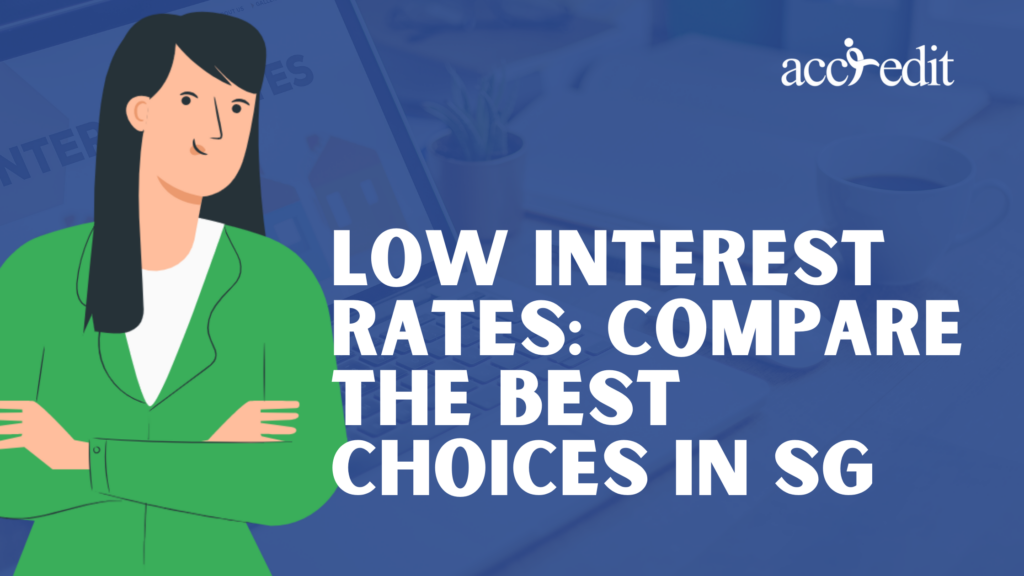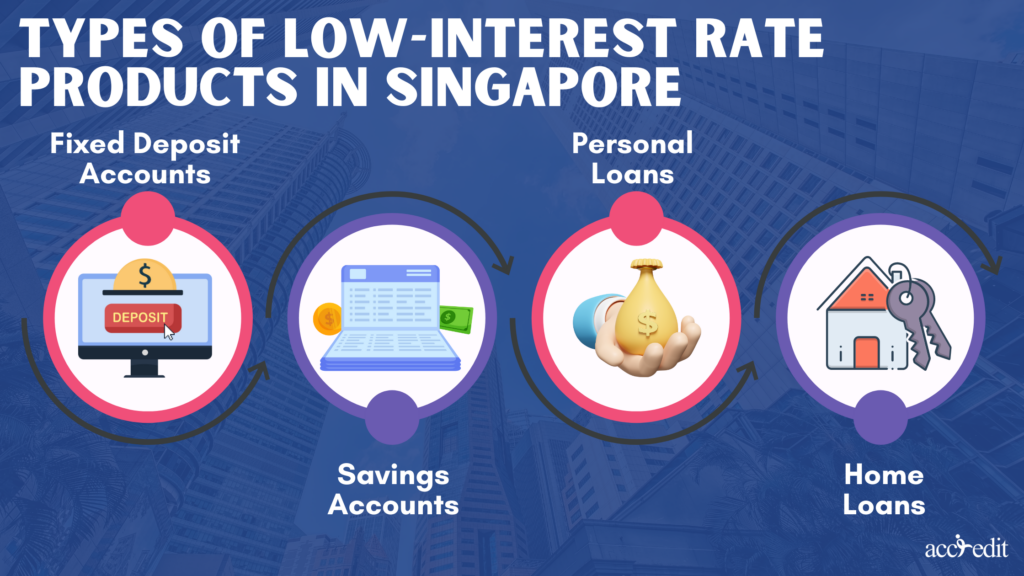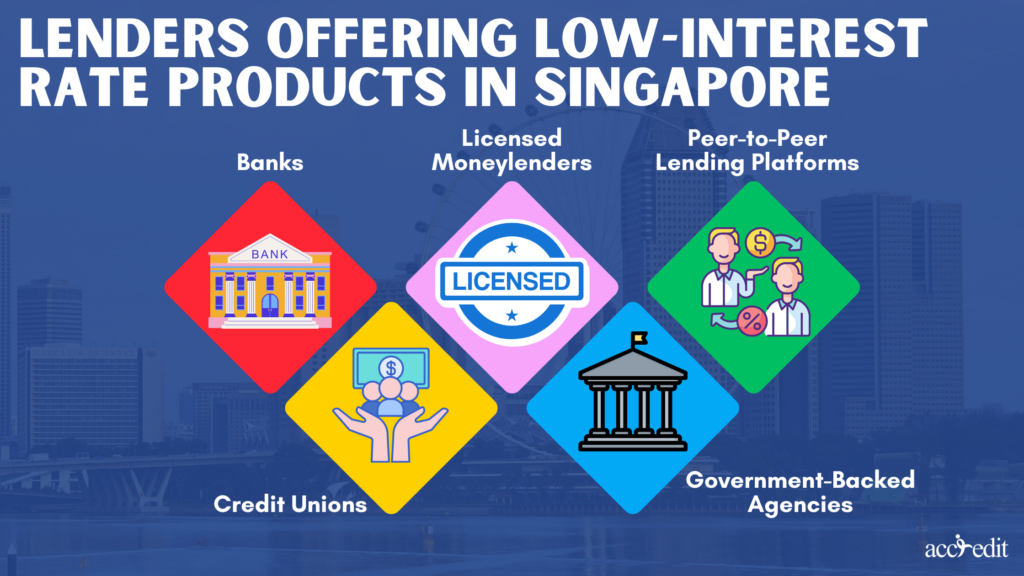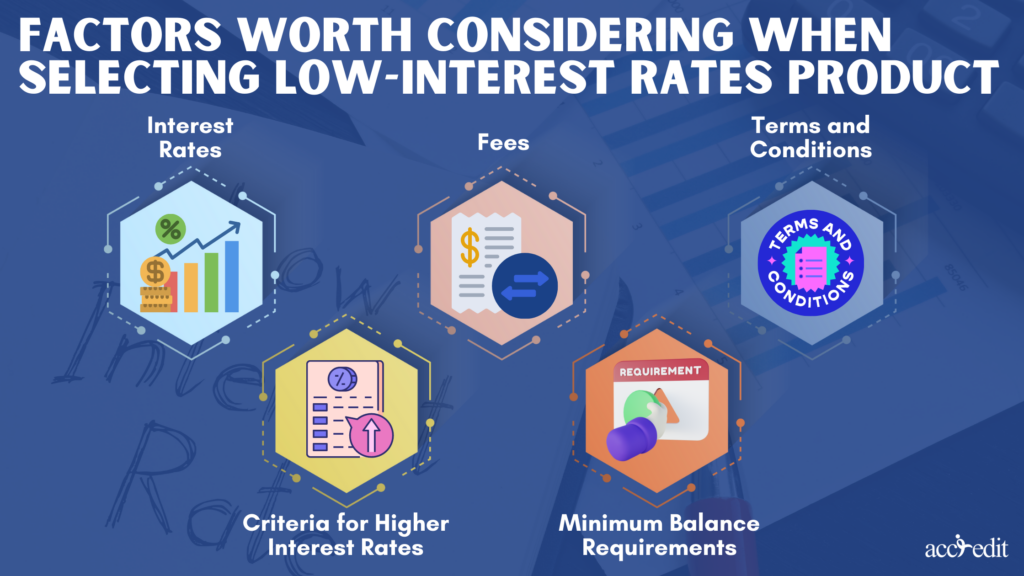
Low-interest rates are among the critical vital factors when determining the feasibility of financial products in Singapore, such as personal loans and savings accounts. Thus, it’s a natural response from individuals and businesses to seek Singapore’s best and lowest interest rates, as these factors can help them meet their specific financial needs.
You’re in the right place if you are among the many individuals or SMEs striving to find Singapore’s lowest interest rates. In this article, you’ll learn how to compare such rates and come across different product types that may offer them. In addition, you’ll get to read an easy-to-follow guide on choosing the top options that suit you excellently.
What are Interest Rates?

These are associated with loans and are considered the cost of borrowing money from any accredited and registered lender in Singapore. It’s usually expressed as a percentage obtained from the total loan amount. It also represents the sum of interest which should be paid on top of the principal loan amount.
Why are Low-Interest Rates Important?

Choosing the lowest interest rates is important because it’ll reduce the total cost of loaning the money. It makes debts far more affordable.
Borrowers like you can take full advantage of the lesser payments per month. This allows you to manage your cash flow effectively and better. For individuals or businesses who have taken out long-term loans like business loans and mortgages, low-interest charges would help them immensely.
It further encourages spending and investment, which then stimulates economic growth. Businesses invest in new projects, and consumers have excess funds they can afford to spend on necessities and other purposes.
Types of Low-Interest Rate Products in Singapore

Undoubtedly, Singapore’s financial industry grants a wide variety of low-interest-rate products. All of these differ from one another. It also has specific features that benefit an individual’s or business’ requirements, mainly saving money, earning interest and attaining financial goals.
Here are the following products with sample calculations:
Fixed Deposit Accounts
These are another branch of savings accounts that grants a fixed interest rate for a certain and fixed period. Accounts such as these are considered a low-risk approach to earning interest on savings.
The interest rate proposed will be based on the deposited amount with the deposit’s specific duration. Remember that the interest rates for FDA are typically higher than savings accounts.
When it comes to its key features and functions, it mostly includes:
- Fixed interest rate:
Interest rates are fixed for a specified timeframe, generally between 0.2% and 2.5%, and may range from one month to five years.
- Minimum deposit amount:
The minimum deposit amount is a nonnegotiable requirement when opening a fixed deposit amount. The minimum amount may vary according to the bank or financial institution. However, it may typically go from $1,000 up to $10,000.
- Penalty for early withdrawal:
If consumers feel compelled to withdraw their funds before the maturity date, they’ll be penalised. It can reduce the consumer’s earnings.
The fixed deposit account’s typical penalty fee would range from 1% to 2% of the withdrawn amount.
Sample Calculation for Fixed Deposit Accounts:
Suppose you’ve deposited funds into your fixed deposit account amounting to $5,000. It has a 1.5% interest rate with a two-year tenure. At maturity, you may expect to receive a total amount of:
Interest Earned = $5,000 x 1.5% x 2 = $150
Total Amount at Maturity = $5,000 + $150 = $5,150
Savings Accounts
These are recognised as the most basic product form in the banking industry. The interest rates are lower and grant safe and easy access when storing or acquiring one’s funds.
The interest rate proffered varies on the balance accessible in the account and the type of account. The key features and functions of this account include:
- Low minimum deposit amount:
These savings accounts have low minimum deposit requirements, thus, encouraging accessibility to consumers. It generally ranges from $0 up to $500.
- Low-interest rate:
Savings accounts’ interest rates are lower than fixed deposit accounts; it offers liquidity and flexibility, with a typical range of 0.05% up to 0.8%.
- No penalties for withdrawal:
Consumers who own a savings account can withdraw funds anytime without worrying about penalties.
Sample Calculation for Savings Accounts:
You must deposit $1,000 funds into your savings account with a 0.5% interest rate. Upon leaving this particular amount untouched in the account for a year, you may earn interest of:
Interest Earned = $1,000 x 0.5% = $5
Total Amount on Year’s End = $1,005
Personal Loans
Personal loans are outstanding unsecured debts in Singapore. It’s a debt product utilised for various purposes, from home renovation paying medical bills, funds for travelling, or debt consolidation.
Unlike fixed deposit and savings accounts, personal loans’ interest rates are relatively higher. It’s because it’s an unsecured loan which doesn’t demand collateral.
- Flexible Loan Amount:
The maximum loan amount is often based on the lender’s policies. This’ll also include assessing and evaluating the consumers’ creditworthiness. However, it typically ranges between $1,000 to $100,000.
- Interest Rate:
Overall, the interest rates are low compared to other unsecured debts in Singapore. Lenders that proffer personal loans impose varying interest rates. Yet, it could range between 3.5% to 7% per annum.
Individuals who borrow from licensed moneylenders in Singapore would acquire a monthly 1% up to 4% maximum interest rate.
- Fixed Monthly Payment:
Borrowers must repay the personal loans through fixed monthly payments, including principal and interest.
Sample Calculation for Personal Loans:
Suppose you’ve taken out a personal loan worth $10,000 with a 4% interest rate for a three-year tenure. The payable total amount would be:
Total Interest Payable = ($10,000 x 4% x 3) = $1,200
Total Amount Payable = $10,000 + $1,200 = $11,200
Monthly Instalment = $11,200 / (3 x 12) = 311.11
Home Loans
These are secured debts usually taken when purchasing a property. Home loans have lower interest rates than personal loans because the property will act as collateral.
The key features and functions of home loans in Singapore include:
- Flexible Loan Amount:
For home loans, borrowers can obtain loans ranging from $100,000 to several million.
- Variable or Fixed Low-Interest Rate:
Home loans have lower interest rates than many secured loan products in Singapore. The usual range for home loans’ low-interest rates is 1.5% to 3.5%. Consumers also have the option to select whether they prefer a fixed or variable interest rate that fits their goals best.
- Penalty for Early Withdrawal:
If a borrower took a home loan partially or fully repaid before the lock-in period, they would likely acquire 1.5% up to 2% penalty fees.
- Long Repayment Period:
A notable feature of a home loan is its long repayment period which ranges from fifteen to thirty tears.
Sample Calculations for Home Loans:
You took out a home loan that’s worth $500,000. The lender granted you an interest rate of 2.5% with a twenty-year tenure. The overall amount you’ll have to repay would be:
Total Interest Payable = ($500,000 x 2.5% x 20 years) + $500,000 = $750,000
Monthly Instalment = $3,125
Lenders Offering Low-Interest Rate Products in Singapore

Singapore thrives continuously as Asia’s financial hub. Thus, its capacity to offer various low-interest-rate products to its community is incomparable.
Whether the purpose is for personal use or business needs, you may seek several lenders in the country for loans and other monetary products with competitive interest rates.
Banks
Singapore’s banking sector is among the epitome of high-standard financing organisations with continuous growth and development. It’s a reliable source with local and foreign banks granting low-interest rate products such as savings accounts, fixed deposit accounts, personal loans, and home loans.
Credit Unions
These are Singapore’s financial cooperatives that grant low-interest loans to its members and even different types of monetary products. These financial institutions are open to providing personal loans and home loans with exceptionally competitive rates.
Licensed Moneylenders
Licensed moneylenders in Singapore, belong to the well-acknowledged moneylending industry. These accredited lenders are regulated by the Moneylenders Act and under the Ministry of Law (MOL) jurisdiction.
Government-Backed Agencies
Singapore diligently serves its community by providing financial assistance through low-interest rate loans from government agencies. Its main objective is to support various initiatives.
Particularly it proffers the Housing Development Board (HDB) home loans for public housing ownership.
Peer-to-Peer Lending Platforms
Peer-to-Peer (P2P) lending platforms in Singapore connect borrowers and investors to discuss lending opportunities with competitive interest rates.
P2P lending platforms offer personal loans in Singapore with lower interest rates than traditionally known lenders.
Factors Worth Considering When Selecting Low-Interest Rates Product

Choosing a lender may take a while, especially when you compare the diverse low-interest-rate financial products in Singapore. But, some factors are worth considering before proceeding with the next steps.
By noting and analysing these factors, it’ll assist you better in finding the most suitable monetary product that meets your needs and objectives.
1. Interest Rates
A key factor you must always weigh is the products’ interest rate. No doubt, interest rates that are lower are attractive to some. Still, comparing different rates between various products allows you to get the best rate.
It’s best to know the current updates with interest rates because it’s not definite. It can change due to many aspects. Check for any changes or updates regarding Singapore’s current interest rate average, particularly on MAS’ monetary policies, global economic conditions, inflation, credit supply and demand, and competition.
2. Criteria for Higher Interest Rates
A few low-interest rate options in Singapore offer an interest rate tier system, which amplifies chances to attain specific criteria upon application.
For instance, your savings account grants a higher interest rate for clients who can maintain a specific minimum balance. Or when you’ve accomplished a certain number of monthly transactions.
Reading and understanding such criteria for earning higher interest rates are essential. Some requirements might be too challenging to meet or sometimes incur extra fees.
3. Fees
Low-interest rate products sometimes have fees associated with them. It’ll make a significant impact on your overall savings returns.
As a result, consider all fees linked with the product you’ve chosen, such as opening fees, maintaining fees, and even early account closure fees.
Sometimes, penalties come up if you don’t meet the eligibility criteria. Filter through such details to ensure you won’t lose more than you hope to gain back.
4. Minimum Balance Requirements
It’s essential to keep up with the minimum balance requirements to acquire the advertised interest rate. Meet and maintain the minimum balance, which will help you avoid any additional fees or subject to penalties.
5. Terms and Conditions
Before opening a fixed deposit amount, savings account, or taking a personal or home loan, carefully read and fully understand the terms and conditions.
These terms and conditions comprise interest rates, minimum balance requirements, fees, and details of your chosen low-interest-rate product.
When you find content that appears confusing on your end or whether you wish to clarify any stipulations, ask your questions without hesitations. This’ll clear any doubt in your mind before you open an account or apply for a personal loan or other loan products.
Compare Low-Interest Rates for The Best Financing Experience
In financing matters, anyone must assume significant responsibility for every transaction involving time, money, and effort. Take note of the different factors, such as the interest rates, criteria, fees, minimum balance requirements and terms and conditions.
As you compare the low-interest rates accessible to you, it’ll be easier to find which one best meets your needs and goals. Furthermore, review and get an update on the current interest rates in the country before solidifying your options, as it changes often.
Don’t hesitate to air your concerns if you notice issues with the terms and conditions. Seek and speak with a financial advisor or research and compare which product grants you a better scope of benefits.
Comparing diverse sources to obtain the lowest possible interest rate will take much time. It’ll demand careful consideration and research. Nonetheless, all the time and effort spent will lead to remarkable savings and financial advantages. Be informed and proactive, and take control of your finances for your future.
To secure your low-interest rates personal loan with Accredit Loan, please apply here.

